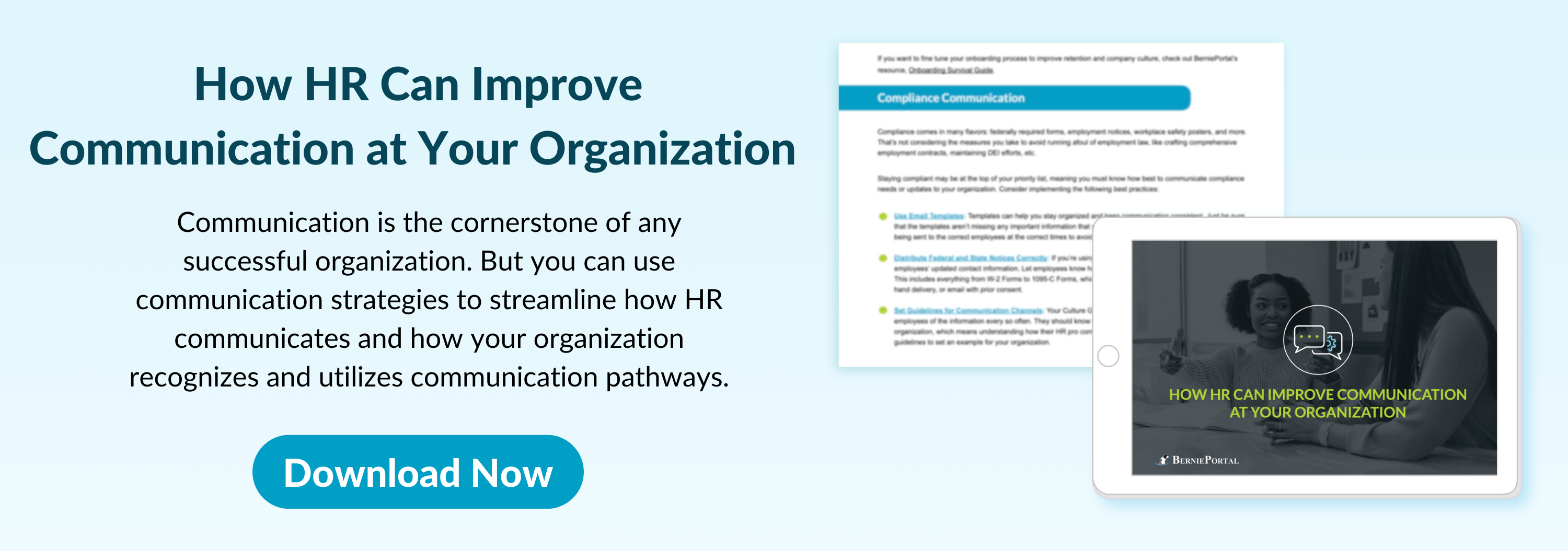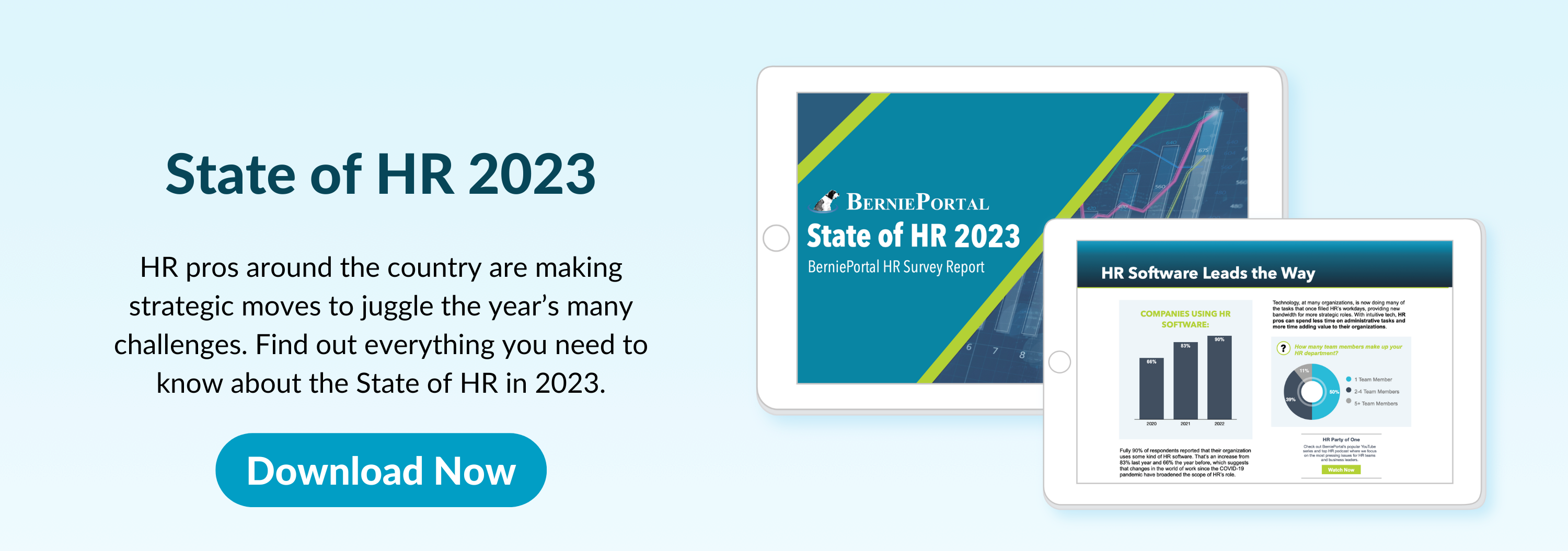Written by
Will Miranne
Will is an aPHR-certified writer on the marketing team at BerniePortal. He writes about healthcare, human resources, and benefits.
L&D in the Workplace: Why it's Not Growing Fast Enough

In today's fast-paced, evolving work environment, employee development and continuous learning are essential for staying competitive and relevant. With the rise of technology and automation, the need for upskilling and reskilling has never been more critical. The concern is that they are not keeping up with the changing demands of the workforce.
In this article, we will explore the reasons why L&D in the workplace is not growing fast enough and what HR professionals can do to address this issue.
Lack of Budget and Resources
One of the primary reasons why learning and development (L&D) in the workplace is not growing fast enough is the lack of budget and resources allocated towards it. Many organizations view L&D as an optional expense rather than a critical investment. As a result, they often prioritize other areas of the business, such as marketing or product development, over L&D initiatives.
Even when organizations do allocate funds toward L&D, they often do not invest enough to make a meaningful impact. However, many L&D professionals are preparing for increased budgets in 2023. According to a report by LinkedIn, 41% of L&D leaders anticipate an increase in budget, while only 8% expect a decrease. This is an uplifting statistic, though that rate is still a slight decrease over the 48% measured at the start of 2022.
Another survey conducted by BerniePortal asked HR leaders to say what their primary goals were for 2023, and 42% answered training and development.
Inadequate Learning Infrastructure
Another reason why L&D in the workplace is not growing fast enough is the inadequate learning infrastructure. Many organizations still rely on traditional training methods such as classroom-based training or one-time workshops. While these methods can be effective for some topics, they are often not the most efficient or effective ways to deliver training.
Traditional training methods are becoming less relevant. Remote work, flexible schedules, and diverse workforces mean that employees need access to on-demand, self-paced training that they can access from anywhere at any time. Additionally, as employees become more digitally savvy, they expect their training to be delivered in an engaging and interactive format.
To address this issue, organizations need to invest in modern learning infrastructure that is designed to meet the needs of a diverse, distributed, and digital workforce. This includes learning management systems (LMS) that can deliver on-demand training, mobile learning apps, virtual reality (VR), and augmented reality (AR) training programs.
Gamification is another method employers can use to engage staff during traditionally rote training regimens.
Lack of Alignment with Business Strategy
Many organizations view L&D as separate from the rest of the business and do not consider how it can contribute to achieving business goals. This often leads to a lack of support from senior leaders and a lack of investment in L&D initiatives.
L&D programs must be aligned with the organization's overall strategy and goals to be effective. This means that L&D professionals need to understand the business strategy and identify areas where employee development can contribute to achieving those goals. For example, if an organization aims to increase sales, L&D programs could focus on sales training and coaching.
And don’t forget that training doesn't have to end with employees—HR can boost their L&D efforts as well. Online courses, training, and conferences, such as Weekdays with Bernie, are all great ways to stay up to date on all things HR so that you can maintain an effective strategy for the rest of your organization.
To start, check out our BernieU courses, where we offer in-depth training opportunities that will earn you SHRM or HRCI credits. A great place to start is our HR Prep course. Check it out now!
How HR Professionals Can Address These Challenges
To address these challenges and accelerate the growth of L&D in your organization, HR professionals can take several steps:
-
Make a Case for L&D as a Critical Investment
HR professionals must make a strong business case for L&D as a critical investment in the organization's future success. This means highlighting the benefits of L&D, such as improved employee retention, increased productivity, and better employee experience. HR professionals should also demonstrate how L&D can contribute to achieving the organization's business goals and showcase the return on investment (ROI) of L&D initiatives.
-
Invest in Modern Learning Infrastructure
To overcome the challenges of inadequate learning infrastructure, HR professionals should work with senior leaders to invest in modern learning infrastructure that meets the needs of a diverse, distributed, and digital workforce. Examples include adopting an LMS, gamification strategies, mobile learning apps, and VR & AR training programs. HR professionals should also prioritize user experience and engagement when selecting L&D tools and resources.
-
Develop a Culture of Learning
Finally, HR professionals should work to develop a culture of learning within the organization. This means promoting a growth mindset and encouraging employees to take ownership of their development.
HR professionals should also provide opportunities for employees to share their knowledge and expertise with others. This will help to prevent knowledge hoarding by creating an environment founded on open communication. By developing a culture of learning, HR professionals can create a workforce that is adaptable, innovative, and continuously improving.
L&D in the workplace needs to grow faster to keep up with the changing demands of the workforce. HR professionals must address the challenges of inadequate budget and resources, inadequate learning infrastructure, and the need for alignment with business strategy.
By making a case for L&D as a critical investment, HR professionals can accelerate its growth within the workplace and ensure that their organizations remain competitive and thriving in the years to come.
Additional Resources
You can also stay informed, educated, and up-to-date with L&D and other important topics by using BerniePortal’s comprehensive resources:
-
BernieU—free online HR courses, approved for SHRM and HRCI recertification credit
-
BerniePortal Blog—a one-stop-shop for HR industry news
-
HR Glossary—featuring the most common HR terms, acronyms, and compliance
-
HR Guides—essential pillars covering an extensive list of comprehensive HR topics
-
HR Party of One—our popular YouTube series and podcast, covering emerging HR trends and enduring HR topics
Written by
Will Miranne
Will is an aPHR-certified writer on the marketing team at BerniePortal. He writes about healthcare, human resources, and benefits.
Related Posts
Employees are the heart and soul of an organization, and valuing their opinions can have...
According to Secure Data Recovery, an alarming 43% of Americans don’t feel like they can...
The first impression an employer makes is just as important (if not more important) than...
In your HR role, people probably ask you for help or advice about things that are,...








Submit a Comment